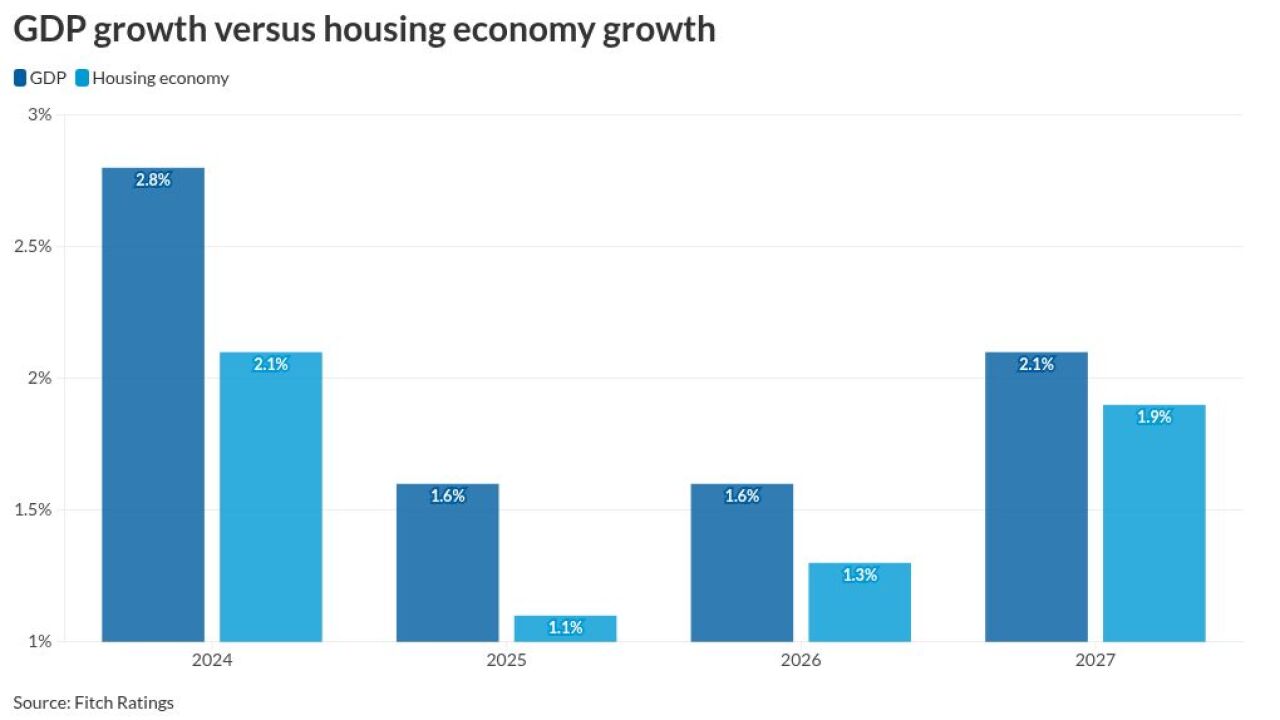
Bloomberg L.P. says it's shutting down its BSBY interest rate benchmark, marking a quiet end to the data provider's attempt to offer a successor to the defunct London Interbank Offered Rate.
The end of Libor, which was once dominant in worldwide financial contracts but was phased out after a rate-rigging scandal, had brought about opportunities for new benchmarks. Bloomberg's goal was to have some chunk of loans between banks and their borrowers refer to BSBY, an interest rate that would go up or down depending on broader financing conditions.
But the rate
BSBY had the backing of some regional and national banks — most notably Bank of America — but U.S. banks and their borrowers didn't rush to adopt the rate at the scale that it needed.
Few observers ever expected BSBY to be as widely used as SOFR,
Instead, Bloomberg
In a statement, a Bloomberg spokesperson attributed the decision to the relatively low usage of BSBY.
"The scope of commercial opportunities for BSBY and its usage within financial products is limited, resulting in the decision to discontinue publication of the rate," the company spokesperson said.
Bank of America, which used BSBY in loans to several publicly traded companies, declined to comment.
It didn't help that at least some financial regulators weren't thrilled about the use of BSBY as a benchmark.
Securities and Exchange Commission Chairman Gary Gensler was particularly combative,
Criticisms of BSBY added a feeling of "risk and grayness" over its usage, making it even tougher to gain momentum, said Edward Ivey, a lawyer and head of the derivative and swaps practice at Moore & Van Allen.
BSBY also faced other challenges, Ivey said.
Early in the transition away from Libor, the SOFR benchmark lacked a forward-looking term option that gave the borrower a clear number they'd pay for the next 30 days or another period. Borrowers seeking a forward-looking rate could find one in BSBY, which helped its proponents to make their case. But once a "term SOFR" option became available, the case for BSBY got a bit weaker, Ivey said.
Another difficulty was a BSBY-related derivatives market that never really took off.
In theory, borrowers whose loans referred to the Bloomberg-backed index could hedge the risk of BSBY rising or falling in the derivatives markets — essentially swapping out the risk of a change in interest rates with another party.
But since few loans used BSBY, there weren't many market participants who made those bets. The lack of players in the market made it more expensive for potential BSBY borrowers who wanted to swap their risks, making it less attractive to take on a BSBY loan in the first place.
SOFR, by contrast, is based on roughly $1 trillion in daily transactions, and it is far easier to hedge risks related to the more popular benchmark. The SOFR index is based on the cost of borrowing cash overnight while putting up U.S. Treasury securities as collateral — a repurchase transaction, or "repo," that's critical to the global financial system.
The repo market is not immune to hiccups — rates
Years ago, many regional banks
Libor was a credit-sensitive rate and thus spiked during times of financial market stress — such as in 2008 and 2020 — which gave banks more compensation to make up for larger risks. But the rate was merely an estimate developed by a handful of bankers in London, and its subjective nature opened it up to the rigging that led to its demise.
BSBY was based on actual transactions, not estimates, from more than 30 larger U.S. banks, though Gensler argued that the pool of transactions was too small, giving BSBY some Libor-like flaws.
The SEC chairman has not publicly said anything similar about Ameribor, another credit-sensitive rate that reflects the cost of bank-to-bank lending on a platform called the American Financial Exchange. The Ameribor rate, which is based on transactions made among hundreds of banks, has gained some traction among smaller banks and has sought to add more banks to its platform.
John Shay, CEO of the American Financial Exchange, said in a statement after BSBY's announcement that the "AFX marketplace and supporters of AMERIBOR are undaunted." The company's website says "one size does not fit all" and argues that Ameribor gives banks a credit-sensitive choice that reflects their "own unique local conditions."
"Things are changing rapidly, and our early adopters understand this and are responding to it," Shay said. "Our hope is to draw in more liquidity providers while providing technological improvements that further streamline the trading process."






